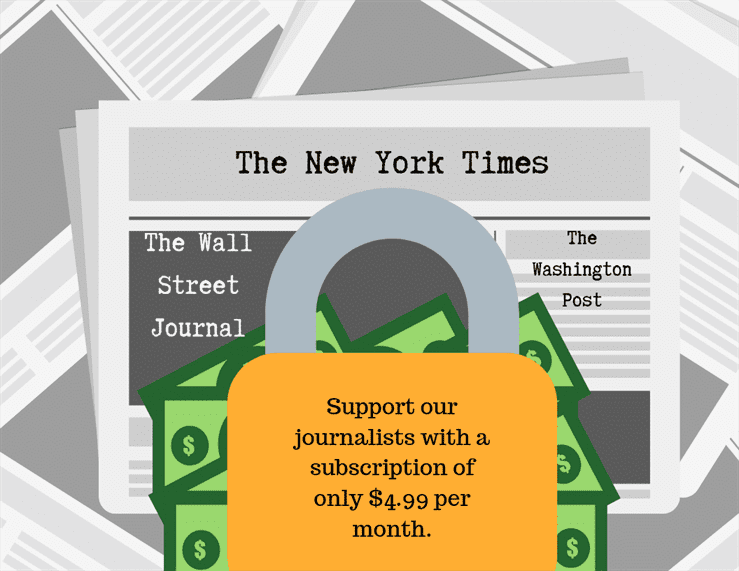For the sake of a functioning society, quality journalism should always be around, but with the internet giving anyone and everyone the ability to easily share and receive an excess of information, the once seemingly indispensable institution of journalism has been struggling to adapt.
As a result, modern journalists have been forced to try to find a way to keep journalism alive, and unfortunately for anyone who values access to information, one popular idea among newspapers is that of the paywall.
Newspaper Websites With Paywalls Doubled in a Year [INFOGRAPHIC] http://t.co/k80a7Yta via @mashable
— Journalism.co.uk (@journalismnews) November 5, 2012
Some of the biggest names in journalism, such as The Washington Post and The New York Times, have decided that to keep themselves afloat readers will have to pay for a subscription to view online content. Many other papers have adopted this model as well.
While some people may see the paywall as a necessity to keep journalism alive, I would argue that it contradicts the very role journalists should be contributing to society, helps the spread of disinformation and demonstrates a lack of concern for the increasing struggles of working-class citizens.
The biggest issue with the use of paywalls can be compared to the well-known question, “If a tree falls in the forest and no one is around to hear it, does it make a sound?”
A journalist’s role in society should be to provide the public with unbiased information that they would not otherwise have access to. If journalists provide information, but only for those who pay to view it, is that really journalism?
Even if every citizen could afford a paywall for every newspaper that has one, the act of putting a barrier in place creates a change in the role those newspapers are playing in society.
Paywalls make even less sense when you consider how many free options are available, and not all free options are credible. While plenty of legitimate sources of news such as The Guardian or The Intercept continue to put out information for free, they are accompanied by sources with a history of reporting false information, such as Breitbart or The Washington Examiner, as well as the countless other sites and individuals who share false information and pass it off as news.
Paywalls are a double-edged sword. They help newspapers survive financially but drive casual readers away to dubious free news sites
— Alexander Clarkson (@APHClarkson) November 17, 2016
Many sites that shouldn’t be trusted are empowered by paywalls because many people will find them more appealing simply for their free access.
Requiring a subscription for news is a slap in the face to working-class citizens. Last year a study from Urban Institute found that 40% of Americans struggle to afford their basic needs.
Newspaper paywalls do well at keeping existing (older) readers, badly at recruiting new ones http://t.co/mxGOW7Iamv via @jayrosen_nyu
— John McQuaid (@johnmcquaid) April 10, 2013
Odds are, those Americans aren’t going to be setting aside enough money every month to pay for a Washington Post or New York Times subscription. And still, many journalists will wonder why so many Americans feel that the press is elitist.
There are plenty of negative aspects of the paywall, and recent studies have been finding that there are not many positives. A study published by the American Marketing Association earlier this year found a significant decline in loyal readers of the New York Times directly attached to the paper’s decision to put up a paywall.
If one of the biggest newspapers in history is losing longtime readers over a paywall, one can only imagine how the use of paywalls could impact smaller scale, local newspapers.
I’m not an economist. I don’t know what the best way for newspapers to stay in business is. But as a journalist, I know that paywalls are not the way to go. Even if they could help newspapers stay alive, they’d be living at too great a cost.



